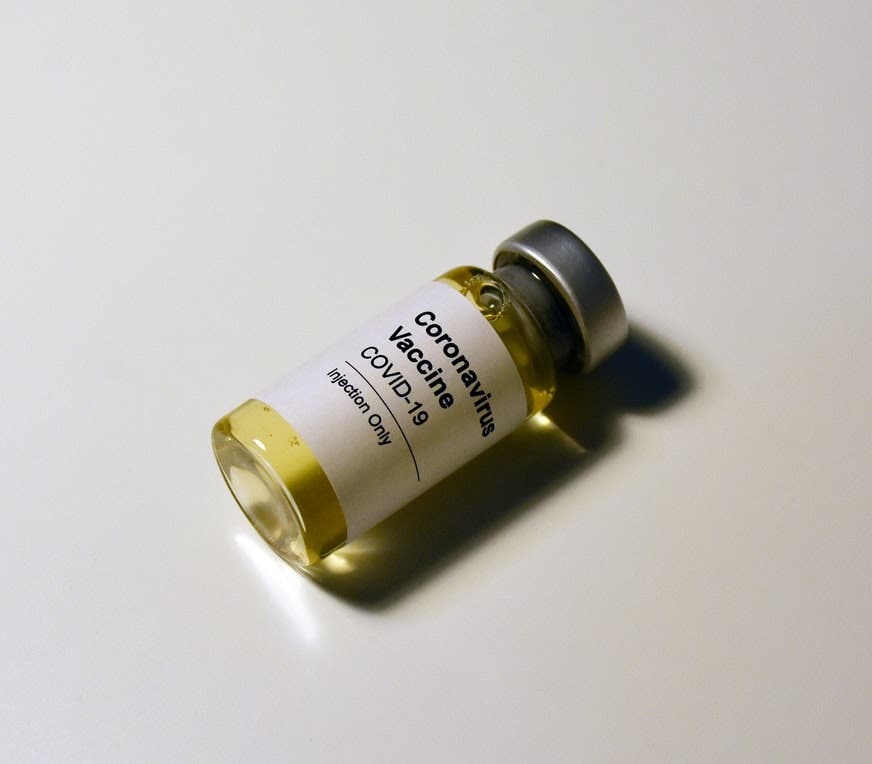The two vaccines made waves around the world. The first COVID-19 vaccines to pass large-scale trials and the first mRNA vaccines, the two were bound to draw scrutiny. So far at least, they have passed with flying colors.
Remarkably, not only do both the vaccines work very well, but they both seem to have exceedingly rare serious side effects. The main difference appears to be in the storage temperature, which needs to be much lower for Pfizer’s vaccine than Moderna’s. Otherwise, the vaccines seem to be generally similar in most regards.
Here is a general overview of the vaccines, and then we’ll look at different aspects in detail.
| Pfizer | Moderna | |
| Efficacy | 95% | 94.1% |
| Technology | mRNA | mRNA |
| Required doses | 2 | 2 |
| Days between doses | 21 | 28 |
| Serious side effects | Exceedingly rare | Exceedingly rare |
| Storage temperature | -70°C (-94°F) | -25°C to -15°C (-13°F to 5°F) |
| Duration of stability at fridge temperature | 5 days | 30 days |
Vaccine efficacy
| Pfizer | Moderna |
| 95% | 94.1% |
Both vaccines show remarkable efficacy, at least in the early stages after vaccination (we’re still not sure how long vaccine immunity lasts). Remarkably, they’re both in the 95% ballpark and although it remains to be seen how their efficacy will fare in the long run, these are excellent figures.
“Both vaccines are superb, and that is an understatement,” said Peter Palese, PhD, Professor of Microbiology and Medicine, Icahn School of Medicine at Mount Sinai, in a briefing for SciLine.
The Pfizer vaccine was 94.1% effective at preventing symptomatic COVID-19 (‘symptomatic’ being an important word). The vaccine efficacy seems slightly lower for people over 65, but there were also fewer participants in this age group so this could distort the stats..
The fine print: how we know about the vaccine efficacy

Of course, both companies published data documenting the vaccines and their efficacies. But researchers don’t just take their word on it: external committees have verified and confirmed the data. Then, regulatory bodies also go over available evidence to ensure that the vaccine is effective and safe to use.
“This [Pfizer]figure comes from review by a data safety and monitoring board. This group has access to the data and is composed of experts outside of Pfizer. Given that they evaluated 94 confirmed cases, with plans for 164 confirmed cases to make a final analysis of efficacy, they are well over halfway to the case endpoint. Ninety percent efficacy is very high, so this is extremely encouraging,” says Paul Spearman, MD, Professor and Director of Infectious Diseases, Cincinnati Children’s Hospital
Preventing most severe COVID-19 infections: both are effective
In the Pfizer study, 8 fully vaccinated people (out of 18,100) got sick — just one of those infections was severe, but there were no hospitalizations required. Three placebo recipients became ill, and two of them were hospitalized, with one requiring intensive care.
In the Moderna study, 11 fully vaccinated people became sick (out of 13,900), and none of the infections was severe. In the unprotected group, 30 severe infections were reported.
Both vaccines seem to dramatically reduce the odds of developing severe infections, perhaps with a slight edge to Moderna (though this needs to be confirmed with larger sample sizes).
“They appear to be roughly equivalent,” said Dr. Paul Offit, a member of the FDA’s vaccine advisory committee, during an appearance on CNN’s “New Day”.
Number of doses: both require two
| Pfizer | Moderna |
| Days between doses: 21 | Days between doses: 28 |
Both vaccines require two shots. The first one is a primer, followed by a booster shot. A study published in the British Medical Journal found that vaccine efficacy after the first dose was 52%, and this was confirmed by data from Israel, on a study on hundreds of thousands of vaccinated people.
Type of vaccine technology: both mRNA
Both vaccines use the innovative messenger RNA (mRNA) approach. The mRNA technology works by encoding a part on the surface of the virus. This encoded piece of protein sparks an immune response in the body, essentially training your body to fight the virus without actually seeing a virus. After your body creates the response to the vaccine, both the protein and the mRNA are eliminated, leaving your body with only the antibodies to protect you.
“The Moderna and Pfizer/BioNTech vaccines are both mRNA vaccines and both cause the body to make a viral protein, called the spike protein, that SARS-CoV-2 uses to invade human cells. In that way, they are very similar. They both utilize a delivery and preservation technique to encase the RNA in the vaccine with lipid (fat) molecules, and these are likely somewhat different between the two vaccines,” says Paul Spearman, MD, Professor and Director of Infectious Diseases, Cincinnati Children’s Hospital
Contrary to conspiracy theories, this has no effect on your DNA. As Shane Crotty, an expert from La Jolla Institute For Allergy and Immunology in Vaccines, explains for Metafact. RNA is like Snapchat for the body, Crotty says: it sends messages that expire and “does NOT become a permanent part of your body”.
“At any moment a human cell has 5000+ different RNA messages, and they are all temporary messages, like post-it notes that get torn up by the cells within minutes or hours after being read,” Crotty says.
Side effects: exceedingly rare
The vaccines can have side effects, but serious side effects are very rare. By far, the most common side effect is injection site pain, followed by fatigue, headache, and muscle pain. The vast majority of the side effects are a sign of your immune system being stimulated. Think of it this way: if you’re going to the gym and you feel fatigue and aches after it, that’s not a bad sign — it’s a sign that your muscles are doing what they’re supposed to.
The existing data outside of the companies’ initial campaigns also supports this. A CDC study showed that out of almost 2 million Pfizer doses, there were just 21 cases of severe allergic reactions and no fatalities. That’s a rate of one serious reaction for 100,000 doses — higher than the 1 in a million figure for the flu vaccine, but still very low.
To ensure the safety of the vaccination campaign, the CDC has asked people who have had a severe reaction to the first dose to not take the second one. If you have had a severe allergic reaction to any ingredient in an mRNA COVID-19 vaccine, you should not get either of the currently available mRNA COVID-19 vaccines.
“If you had an immediate reaction to your first [COVID-19 vaccine] dose, don’t get a second, and if you have a known allergy to components in the vaccine, or very closely related compounds, we recommend you not get vaccinated at this time,” said Tom Clark, the leader of the CDC’s vaccine evaluation team
In particular, Clark advises anyone with a known allergy to polyethylene glycol or polysorbates (two compounds used in the pharmaceutical, cosmetic, and food industry) to avoid getting vaccinated. The CDC advises that people with allergy concerns consult their clinician because, in many cases, even people with a history of allergies can get vaccinated.
Fourteen experts have addressed the issue on Metafact, reaching a consensus: these vaccines have not cut any corners, they seem just as well-designed and developed as any other already approved vaccine.
“The size, thoroughness, and complexity of the clinical trials conducted for the current COVID-19 vaccines were no different than traditional clinical trials,” says Robert Carnahan, an expert Vanderbilt University Medical Center in Immunology, Infectious diseases, Virology. “These are as safe as vaccines and interventions developed on much slower timelines. In either case, given the complexity and diversity of the human system, one can never guarantee freedom from a small number of adverse events. The scale of the trials should give us confidence that these will be small in number.”

Safety for pregnant or lactating women: not clear
None of these groups were considered for either study. The companies report not seeing any concerning signs on animal studies, but the authorizations for both vaccines mention that there’s not enough data to assess whether they are safe for pregnant or lactating women.
Price: Pfizer is probably a bit cheaper (but it depends where you are)
Both Pfizer’s and Moderna’s first vaccine batches will be covered by government contracts already set in place. Different countries are getting somewhat different prices. Moderna CEO Stephen Bancel told German newspaper Welt am Sonntag that the pride for the Moderna vaccine will be between $10 and $50 per dose. The US is getting it at $15 per dose, while the European Union is getting it for $18. Moderna said that after the initial batches are covered, the vaccine price will be estimated at $32-$37 for some consumers. For the population, these first batches will be free.
Meanwhile, Pfizer negotiated the price of its vaccine at $20 per dose in the US, and $14.71 in the EU. The price also varies on the number of doses ordered. However, the price is also a reflection of how much funding the companies have received from different authorities.
Unrelated to the two vaccines, the AstraZeneca one seems to be the cheapest, at $4 per dose. The AstraZeenca vaccine uses a different technology and has a lower efficacy rate.
Logistics, storage, and distribution: Moderna has an edge
The biggest difference between the vaccines, at least based on what we can tell so far, is in how they need to be stored.
One difference that may become important is the temperature of storage, with the Pfizer product requiring -70 degree Celsius storage and Moderna reporting stability at -20 degrees Celsius, a more ‘normal’ freezer temperature. Recently, the company has stated that their vaccine is even stable for 30 days at refrigerator temperatures,” adds Spearman.
“It appears that the requirements for refrigeration of the Pfizer/BioNTech vaccine are more cumbersome than those of the Moderna product,” added Palese.
Pfizer’s vaccine must be stored and delivered in ultra-cold freezers, while Moderna’s requires regular freezers, which will likely make a big difference in the whole logistics of the vaccine rollout.
It’s also noteworthy that Pfizer’s vaccine is usable for five days after thawing, while Moderna’s is stable at fridge temperatures for up to 30 days.
What’s in the vaccines
| Pfizer vaccine ingredients | Moderna vaccine ingredients |
| mRNA Lipids Potassium chloride Monobasic potassium phosphate Sodium chloride Dibasic sodium phosphate dehydrate Sucrose | mRNA Lipids Tromethamine Tromethamine hydrochloride Acetic acid Sodium acetate Sucrose |
The mRNA is the key ingredient in the vaccines, the ‘active’ ingredient. Most of the other ingredients are meant for helping deliver the mRNA and keeping it stable why it’s being delivered.
The bottom line
Both the Pfizer and the Moderna vaccines are similar in many regards. They seem to have a high efficacy, with a very low rate of serious side effects, and come at a comparable price. The Moderna vaccine is easier to store and transport.
Both vaccines have been given regulatory approval in the US, EU, and several other countries.


